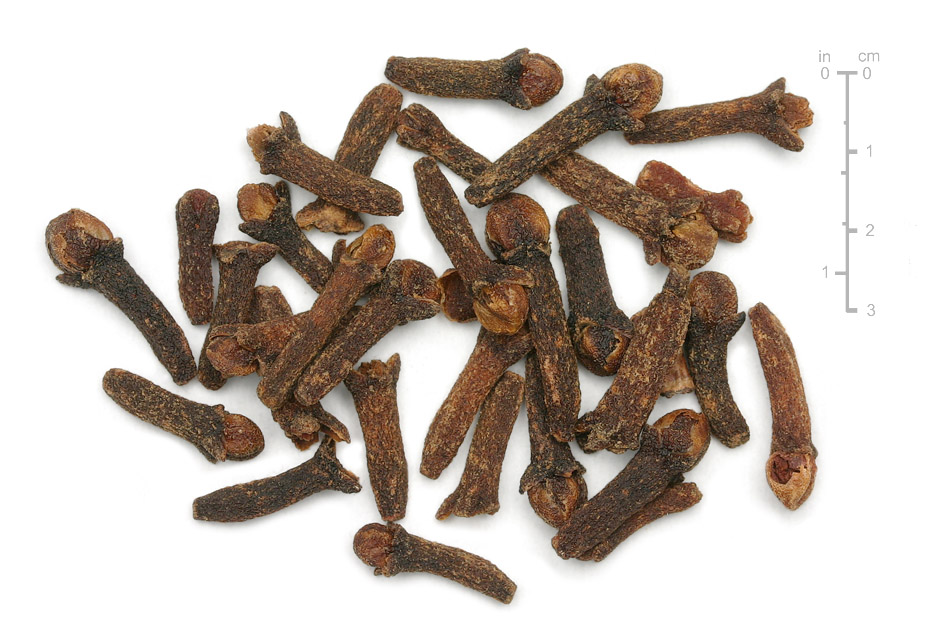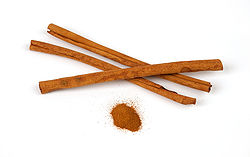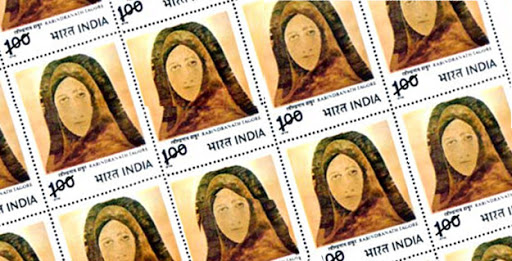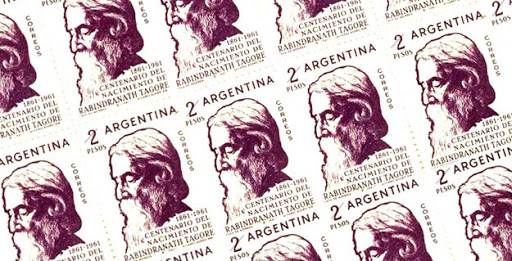Cloves (Syzygium aromaticum, syn. Eugenia aromaticum or Eugenia caryophyllata) are the aromatic dried flower buds of a tree in the family Myrtaceae. Cloves are native to Indonesia and India and used as a spice in cuisine all over the world. The English name derives from Latin clavus 'nail' (also origin of French clou 'nail') as the buds vaguely resemble small irregular nails in shape. Cloves are harvested primarily in Indonesia, Madagascar, Zanzibar, Pakistan, and Sri Lanka; it is also grown in India under the name Lavang, called "lavanga" in Kannada. The clove tree is an evergreen which grows to a height ranging from 10-20 m, having large oval leaves and crimson flowers in numerous groups of terminal clusters. The flower buds are at first of a pale color and gradually become green, after which they develop into a bright red, when they are ready for collecting. Cloves are harvested when 1.5-2 cm long, and consist of a long calyx, terminating in four spreading sepals, and four unopened petals which form a small ball in the centre.

The name cardamom is used for herbs within two genera of the ginger family Zingiberaceae, namely Elettaria and Amomum. Both varieties take the form of a small seedpod, triangular in cross-section and spindle-shaped, with a thin papery outer shell and small black seeds. Elettaria pods are light green in color, while Amomum pods are larger and dark brown.
Both forms of cardamom are used as flavorings in both food and drink, as cooking spices and as a medicine. Elettaria cardamomum (the usual type of cardamom) is used as a spice, a masticatory, and in medicine; it is also smoked sometimes; it is used as a food plant by the larva of the moth Endoclita hosei.
Cardamom has a strong, unique taste, with an intensely aromatic fragrance. Black cardamom has a distinctly more astringent aroma, though not bitter, with a coolness similar to mint, though with a different aroma. It is a common ingredient in Indian cooking, and is often used in baking in Nordic countries, such as in the Finnish sweet bread pulla or in the Scandinavian bread Julekake. Green cardamom is one of the most expensive spices by weight but little is needed to impart the flavor. Cardamom is best stored in pod form because once the seeds are exposed or ground they quickly lose their flavor. However, high-quality ground cardamom is often more readily (and cheaply) available and is an acceptable substitute. For recipes requiring whole cardamom pods, a generally accepted equivalent is 10 pods equals 1½ teaspoons of ground cardamom.
In the Middle East, green cardamom powder is used as a spice for sweet dishes as well as traditional flavouring in coffee and tea. Cardamom pods are ground together with coffee beans to produce a powdered mixture of the two, which is boiled with water to make coffee. Cardamom is also used in some extent in savoury dishes. In Arabic, cardamom is called al-Hayl. In Persian, it is called hel. In Hebrew, it is also called hel (הל). In Gujarati (a derivative of Sanskrit), it is "Ē-lī-chē". In some Middle Eastern countries, coffee and cardamom are often ground in a wooden mortar and cooked together in a mihbaz, an oven using wood or gas, to produce mixtures that are as much as forty percent cardamom.
Turmeric (Curcuma longa) is a rhizomatous herbaceous perennial plant of the ginger family, Zingiberaceae.[2] It is native to tropical South Asia and needs temperatures between 20°C and 30°C, and a considerable amount of annual rainfall to thrive[citation needed]. Plants are gathered annually for their rhizomes, and re-seeded from some of those rhizomes in the following season. The rhizomes are boiled for several hours and then dried in hot ovens, after which they are ground into a deep orange-yellow powder commonly used as a spice in curries and other South Asian and Middle Eastern cuisine, for dyeing, and to impart color to mustard condiments. Its active ingredient is curcumin and it has a distinctly earthy, slightly bitter, slightly hot peppery flavor and a mustardy smell. In medieval Europe, turmeric became known as Indian Saffron, since it was widely used as an alternative to the far more expensive saffron spice.
Coriander (Coriandrum sativum) is an annual herb in the family Apiaceae. It is also known as cilantro, particularly in the Americas. Coriander is native to southern Europe and North Africa to southwestern Asia. It is a soft, hairless plant growing to 50 cm [20 in.] tall. The leaves are variable in shape, broadly lobed at the base of the plant, and slender and feathery higher on the flowering stems. The flowers are borne in small umbels, white or very pale pink, asymmetrical, with the petals pointing away from the centre of the umbel longer (5-6 mm) than those pointing towards it (only 1-3 mm long). The fruit is a globular dry schizocarp 3-5 mm diameter. The word derives from Latin “coriandrum” in turn from Greek “κορίαννον”.The Mycenaean Greek form of the word, koriadnon is "similar to the name of Minos' daughter Ariadne, and it is plain how this might be corrupted later to koriannon or koriandron."
Cinnamon (Cinnamomum verum, synonym C. zeylanicum) is a small evergreen tree belonging to the family Lauraceae, native to Sri Lanka,or the spice obtained from the tree's bark. It is often confused with other similar species and the similar spices derived from them, such as Cassia and Cinnamomum burmannii, which are often called cinnamon too. Cinnamon bark is widely used as a spice. It is principally employed in cookery as a condiment and flavoring material. It is used in the preparation of chocolate, especially in Mexico, which is the main importer of true cinnamon.It is also used in the preparation of some kinds of desserts, such as apple pie, donuts and cinnamon buns as well as spicy candies, tea, hot cocoa, and liqueurs. True cinnamon, rather than cassia, is more suitable for use in sweet dishes. In the Middle East, it is often used in savory dishes of chicken and lamb. In the United States, cinnamon and sugar are often used to flavor cereals, bread-based dishes, and fruits, especially apples; a cinnamon-sugar mixture is even sold separately for such purposes. Cinnamon can also be used in pickling. Cinnamon bark is one of the few spices that can be consumed directly. Cinnamon powder has long been an important spice in Persian cuisine, used in a variety of thick soups, drinks, and sweets. It is often mixed with rosewater or other spices to make a cinnamon-based curry powder for stews or just sprinkled on sweet treats.












0 comments:
Post a Comment